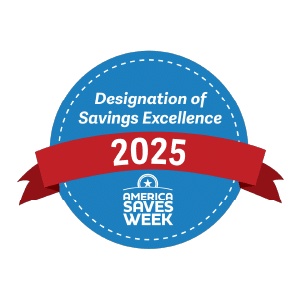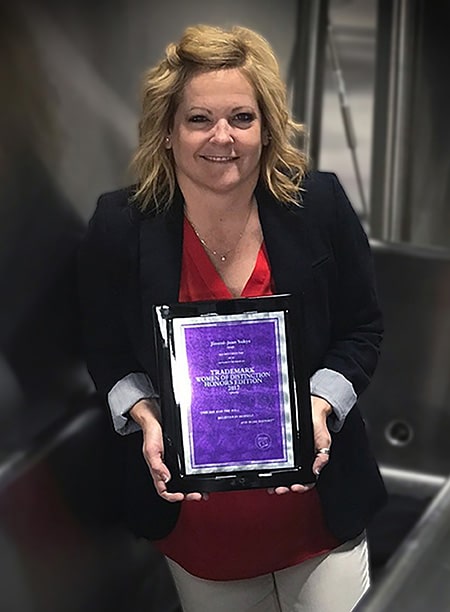Results Found: 252
-

Waterstone Financial, Inc. Announces Results of Operations for the Quarter and Six Months Ended June 30, 2025
Wauwatosa, WI – 7/22/2025 – Waterstone Financial, Inc. (NASDAQ: WSBF), holding company for WaterStone Bank, reported net income of $7.7 million, or $0.43 per diluted share, for the quarter…
-

WaterStone Bank Recognized for Excellence in Promoting Savings
Our commitment to supporting saving and financial health in our community has earned national recognition: WaterStone Bank is proud to be named a recipient of the 2025 Designation of…
-

Safeguarding Your Mail: Tips from the U.S. Post Office Security
While technology brings new innovations and changes to how society operates every day, there are some age-old practices that remain — like mailing through the U.S. Postal Service. Many…
-

A Well Thought Out Legacy Plan Will Help Benefit Future Generations
After spending a lifetime accumulating wealth, it’s natural to want to see it sustained for your family over succeeding generations. You can start the process by creating a plan…
-

Ask the Expert: Banking Services to Set Up When Starting a Small Business
Our experts are here to answer your questions! Here’s West Allis–National Community President Maria Castro with insights and tips for starting a small business. Q: I’m in the process…
-

MYCO Driver Finds a Steady Partner in WaterStone Bank
MYCO Driver, based in Wauwatosa, Wisconsin, is all about helping companies in the commercial transportation world find the right drivers—quickly and reliably. After more than two decades in business,…
-

Supporting Veterans in Need
WaterStone Bank is dedicated to giving back to those who have served our country. Through our foundation that serves local nonprofits, we actively support dozens of veteran-focused organizations, ensuring…
-

How a HELOC Can Help You Stay Flexible When Interest Rates Won’t Budge
When housing inventory is low and is accompanied by higher interest rates, some homeowners may choose to stay put and invest in their current homes. A Home Equity Line…
-

Waterstone Financial Announces Election of New Board Members
WAUWATOSA, Wis. – July 9, 2025 – Waterstone Financial, Inc. (NASDAQ: WSBF) announced today that its Board of Directors has elected Molly Mulroy and Laura Piotrowski to serve on…
-

Waterstone Financial Declares Regular Quarterly Cash Dividend on June 17, 2025
Wauwatosa, Wis. — 6/17/2025 — On June 17, 2025, the Board of Directors of Waterstone Financial, Inc. (NASDAQ: WSBF) declared a regular quarterly cash dividend of $0.15 per common share. …
-

Waterstone Financial, Inc. Announces Results of Operations for the Quarter Ended March 31, 2025
Wauwatosa, WI – 4/22/2025 – Waterstone Financial, Inc. (NASDAQ: WSBF), holding company for WaterStone Bank, reported net income of $3.0 million, or $0.17 per diluted share, for the quarter ended March 31,…
-

Built Around You: The Story Behind Our Website Changes
We’re excited to welcome you to the new WaterStone Bank website—a redesign built with you in mind. Our goal was simple: make it easier, faster, and more helpful for you to…
-

Waterstone Financial Announces Director Retirement
Wauwatosa, Wis. — 4/17/2025 — Waterstone Financial, Inc. (the “Company”), announced today that Michael Hansen has decided to retire as a Director of the Company and its wholly-owned subsidiary WaterStone…
-

Waterstone Financial Declares Regular Quarterly Cash Dividend on March 20, 2025
Wauwatosa, Wis. — 3/20/2025 — On March 20, 2025, the Board of Directors of Waterstone Financial, Inc. (NASDAQ: WSBF) declared a regular quarterly cash dividend of $0.15 per common share.…
-

Gurdeep Chahal Promoted to Community President
Wauwatosa, Wis. – March 4, 2025 – WaterStone Bank is pleased to announce the promotion of Gurdeep Chahal to Community President of its Germantown branch. Since joining WaterStone Bank…
-

Forged for Success—Strong partnerships fuel innovation and growth
Quality Tank Solutions expands with hands-on support from WaterStone Bank Jimmi-Jean Sukys never set out to dominate the steel tank business—nor did she dwell on the rarity of being…
-

11 Tips to Save Money on Grocery Shopping
As summer winds down and the busy school year approaches, it’s even more important to examine your budget and note where you can save—particularly on groceries, which only seem…
-

Safely Linking Bank Accounts
The digital age has brought us many things: social media, e-books and streaming services. It’s also changed the way we live our lives, from online shopping to food delivery…
-

Waterstone Financial, Inc. Announces Results of Operations for the Quarter and Year Ended December 31, 2024
Wauwatosa, WI – 1/28/2025 – Waterstone Financial, Inc. (NASDAQ: WSBF), holding company for WaterStone Bank, reported net income of $5.2 million, or $0.28 per diluted share, for the quarter…
-

Changes to 401(k)s and Roth IRAs in 2025
Saving for Retirement: What You Need to Know for 2025 The new year is nearly here, which means it’s time to start thinking about year-end IRA contributions and changes…
-

Waterstone Financial Declares Regular Quarterly Cash Dividend on December 19, 2024
Wauwatosa, Wis. — 12/19/2024 — On December 19, 2024, the Board of Directors of Waterstone Financial, Inc. (NASDAQ: WSBF) declared a regular quarterly cash dividend of $0.15 per common…
-

Waterstone Financial Declares Regular Quarterly Cash Dividend on December 19, 2024
Wauwatosa, Wis. — 12/19/2024 — On December 19, 2024, the Board of Directors of Waterstone Financial, Inc. (NASDAQ: WSBF) declared a regular quarterly cash dividend of $0.15 per common…
-

Is it Worth Refinancing a Home Loan?
Unlocking Savings: Is it worth refinancing a home loan? With mortgage interest rates budging only slightly from recent highs in 2023, many homeowners are faced with a decision: Act…
-

How to Maximize Your FSA & HSA
Maximizing Your FSA and HSA: A Guide to Smart Healthcare Planning Understanding HSAs and FSAs Flexible spending accounts (FSAs) and health savings accounts (HSAs) are valuable tools in benefits…
